Title: The Chemical Signature of a Relic Star Cluster in the Sextans Dwarf Spheroidal Galaxy – Implications for Near-Field Cosmology
Authors: Torgny Karlsson, Joss Bland-Hawthorn, Ken Freeman, and Joe Silk
First Author’s Institution: Uppsala University
Galaxy assembly is very much an unsolved problem in astronomy today, and one major goal is to identify the physical sequence of events that gave rise to the different components we see in galaxies today. In particular, understanding how dwarf galaxies form and evolve is critical to describing the build-up of galaxies like the Milky Way, which ostensibly accrete many of these smaller objects over their lifetimes. Fortunately for us, the gradual formation of large systems via hierarchical merging leaves behind evidence that can still be seen long after a particular merger event; the term “galactic archaeology” is just a clever way of referring to the technique of using this trace evidence to infer something about a galaxy’s past.
Studies of the Milky Way halo have shown that a substantial number of satellites have been or are in the process of being tidally disrupted, leaving behind streams of stars which all share detailed kinematic information that ties them to the same progenitor satellite. However, if the merger occurred long enough ago that the system has had sufficient time to relax, kinematics are no longer able to connect individual stars to a specific event, and dynamical probing ceases to be a useful tool. But there is hope! To first order, all stars in a given open cluster have virtually the same composition, and this chemical fingerprint can be used to identify stars with a common formation event, even if all dynamical information about their origins has been lost. In the context of galactic archaeology, these stellar chemical abundance patterns are regarded as “fossil signatures” of a galaxy’s history and can be applied to a wide range of systems, including the Milky Way and extending down to much smaller scales.
The Sextans dwarf spheroidal galaxy is a satellite of the Milky Way, one of only about a dozen such “dwarf spheroidal” (or dSph) galaxies known. Like dwarf ellipticals, dwarf spheroidals lack any significant gas or dust component and appear to have formed at very early times with little star formation activity in the recent past. Because they are relatively simple compared to the Milky Way, dSphs are the subject of many studies focused on the distribution and evolution of chemical composition patterns, which has led to a number of interesting results, including the claim by Torgny Karlsson and his colleagues that a significant fraction of the metal-poor stars in the Sextans dSph were once members of the same massive cluster.
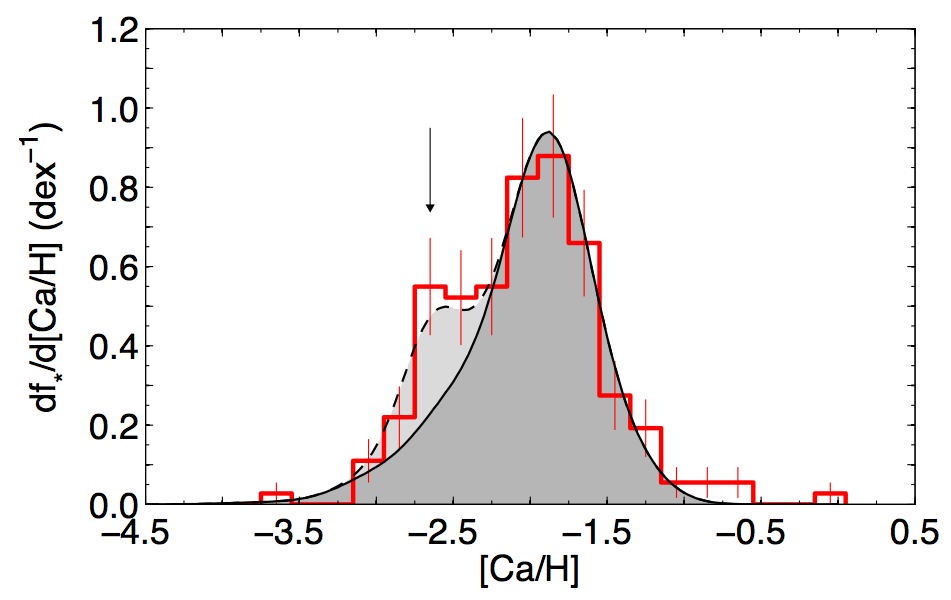
Figure 1: Metallicity distribution function for stars in the Sextans dSph galaxy, showing the predicted distribution of metallicities (solid black line) and the distribution including a star cluster with a Ca abundance of ~ -2.65 (dashed black line). Figure taken from Karlsson et al. (2012).
In their paper on astro-ph, they note three key pieces of evidence, two of which rely on the chemical composition of the proposed cluster members. One of these is a “bump” in the metallicity distribution function (MDF) of the Sextans dSph (see Figure 1), which was revealed when metallicities for four dSphs were re-calibrated by Starkenburg et al. (2010). The peak of this bump occurs for stars with a calcium abundance which is less than one percent of the Sun’s calcium abundance (i.e., [Ca/H] ~ -2.65, if the [Ca/Fe] enhancement of +0.25 from the Starkenburg paper is assumed) and could be due to a real excess of stars with very low metallicities. A similar “bump” occurs in medium-resolution data from a different paper, but is attributed instead to an early burst of star formation in the Sextans dSph’s past.
Distinguishing between these hypotheses requires detailed chemical abundance information, which led the authors to turn to a paper by Aoki et al. (2009). Using high-resolution spectroscopy, Aoki et al. determined the chemical abundances of six very metal-poor stars, all with [Fe/H] ~ -2.7 and calcium abundances consistent with the overdensity in the MDF. Figure 2 shows that these stars clump together in other regions of chemical abundance parameter space (or C-space), which Karlsson et al. take to be evidence of former cluster membership.
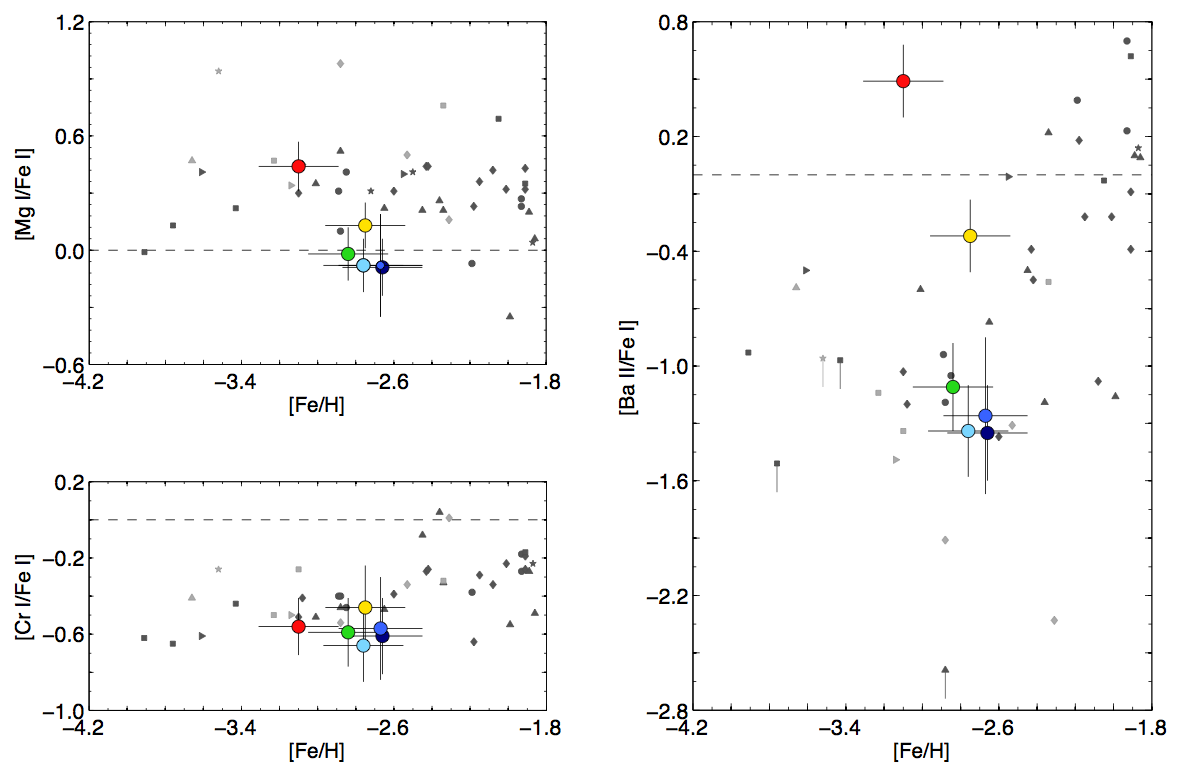
Figure 2: Data from Aoki et al. (2009), showing the clumping of potential cluster members in Mg, Cr, and Ba. Figure taken from Karlsson et al. (2012).
If these stars are indeed members of a now-disrupted star cluster with [Fe/H] ~ -2.7, these observations would mark the discovery of the most metal-poor cluster yet observed. Having made the assumption that a relic star cluster does exist in the Sextans dSph, the authors go on to report a cluster mass of ~ 1.9 x 105 M☉, assuming a Salpeter initial mass function. Such a mass places it in the middle of the expected range for Galactic globular clusters, and there may also be chemical evidence to suggest that is the case, but the authors note that this determination is very difficult to confirm without additional information about the chemical composition of the original cluster.
If the idea of “chemical tagging” is something you find interesting, I strongly encourage you to read this paper on astro-ph and take a gander at the review which started it all back in 2002.

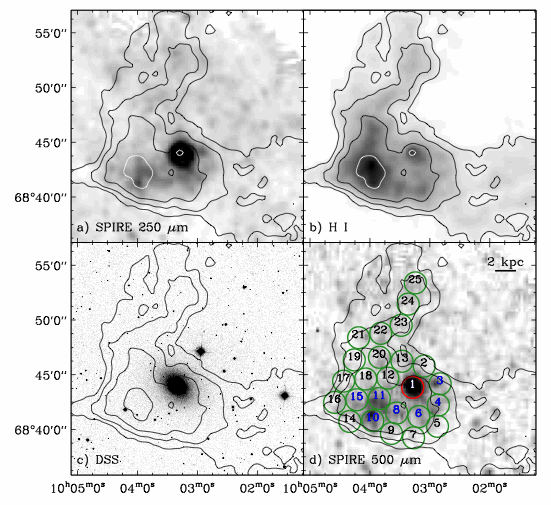
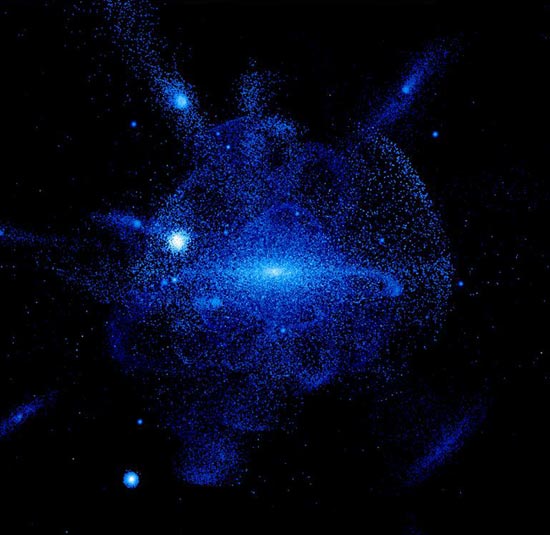
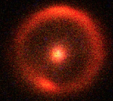
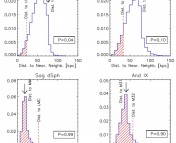
Trackbacks/Pingbacks